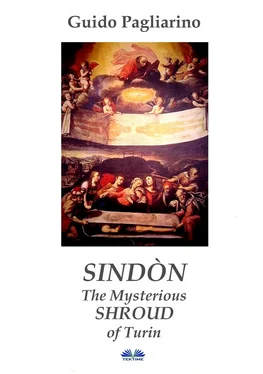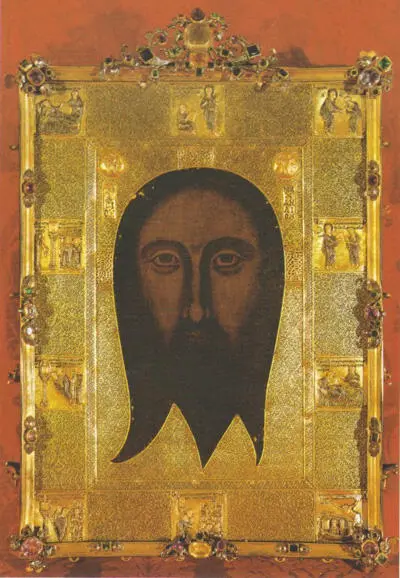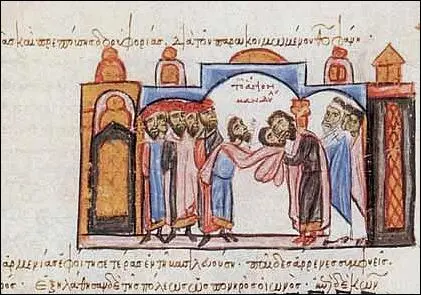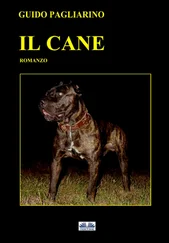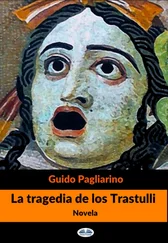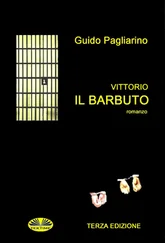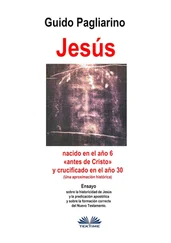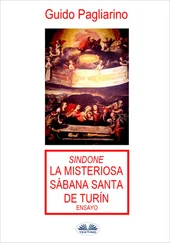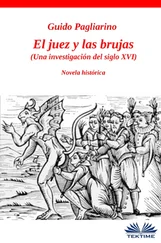Guido Pagliarino - Sindòn The Mysterious Shroud Of Turin
Здесь есть возможность читать онлайн «Guido Pagliarino - Sindòn The Mysterious Shroud Of Turin» — ознакомительный отрывок электронной книги совершенно бесплатно, а после прочтения отрывка купить полную версию. В некоторых случаях можно слушать аудио, скачать через торрент в формате fb2 и присутствует краткое содержание. Жанр: unrecognised, на английском языке. Описание произведения, (предисловие) а так же отзывы посетителей доступны на портале библиотеки ЛибКат.
- Название:Sindòn The Mysterious Shroud Of Turin
- Автор:
- Жанр:
- Год:неизвестен
- ISBN:нет данных
- Рейтинг книги:4 / 5. Голосов: 1
-
Избранное:Добавить в избранное
- Отзывы:
-
Ваша оценка:
Sindòn The Mysterious Shroud Of Turin: краткое содержание, описание и аннотация
Предлагаем к чтению аннотацию, описание, краткое содержание или предисловие (зависит от того, что написал сам автор книги «Sindòn The Mysterious Shroud Of Turin»). Если вы не нашли необходимую информацию о книге — напишите в комментариях, мы постараемся отыскать её.
The author returns several times to certain subjects, according to different perspectives: the reader does not consider such reiterations as not necessary and involuntary: the work includes a general introductory part - at some point, considering it useful, already with in-depth studies, as for the medical conclusions of the anatomopathologist Pierluigi Baima Bollone - and a section, divided into chapters, specifically dealing with particular topics already covered in the first part, for example the photographs of the Shroud, and a chronology.
This essay has been updated several times by the author.
The essay is not intended to persuade to believe that the Sheet of Turin has really wrapped the body of Christ a couple of thousand years ago or, as commonly said, that it is authentic-
On the other hand, authenticity can also mean something else, you can say the Shroud preserved in Turin is the Cloth that wrapped body of Christ, but it could be different than simply assume that an item is two thousand years old; and if I do not take a position on the fact that this famous Sheet wrapped Jesus, I suppose that the reasons for thinking that the Shroud is very ancient are prevailing, as there are currently lots of evidence to support it and only two against, of which only one seems objectively to be considered: the radiodating tests on Shroud samples which determined the age of the Sheet at lower medieval period; but they are increasingly disputed by Christian experts, scientifically and not only. The other reason against the Shroud is a prejudice, that comes both from anticlerical laity
and from the majority of the Christians Reformed, preclusion that leads the first to ignore the theme, and sometime to mock it; and leads the Protestant believers to condemn the veneration of the Shroud, which they consider to be a mere ”symbol” created by human hands: they follow the Old Testament condemnation of ”make for yourself images”, historically born for anti-idolatrous reasons, although Catholics argue that the prohibition existed only before God was incarnated in Jesus, showing himself to the world as ”image”, that is as carnal human figure, without any possibility to be confused with graven images; there are, moreover, Catholics who deny authenticity, in the sense that the Shroud isn't precisely the one that wrapped Jesus , and you can find Protestants which assume it is authentic, at least in the second sense of the term or even in the first. In any case, it should be stressed that the Christian faith is not based on the Shroud of Turin but, historically, on the oral witness of the Apostles on Christ’s resurrection, gathered within the first century in the books of the New Testament and come down to us because it was preserved by the Church over the centuries, with systematic control of matching between the new copies and the previous ones, starting with the oldest.
With this spirit comes the second edition of the essay of Guido Pagliarino on the Shroud, , carried out considering new data and correcting a couple of inaccuracies in the book released years ago
The author returns several times to certain subjects, according to different perspectives: the reader does not consider such reiterations as not necessary and involuntary: the work includes a general introductory part - at some point, considering it useful, already with in-depth studies, as for the medical conclusions of the anatomopathologist Pierluigi Baima Bollone - and a section, divided into chapters, specifically dealing with particular topics already covered in the first part, for example the photographs of the Shroud, and a chronology.
